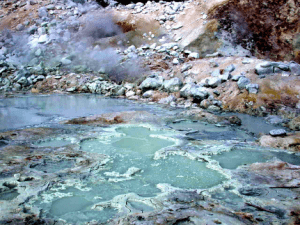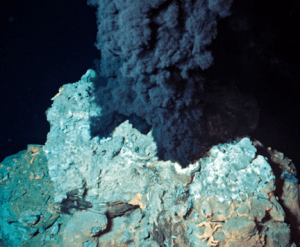Life sciences seeks to understand how life on earth was catalyzed and evolved. Astrobiology depends on this research to extrapolate where the conditions for life might exist outside of Earth.
At Bumpass Hell in California’s Lassen Volcanic National Park, the ground is literally boiling, and the aroma of rotten eggs fills the air. Gas bubbles rise through puddles of mud, producing goopy popping sounds. Jets of scorching-hot steam blast from vents in the earth. Some scientists contend that life on our planet arose in such seemingly inhospitable conditions. Long before creatures roamed the Earth, hot springs like Bumpass Hell may have promoted chemical reactions that linked together simple molecules in a first step toward complexity.

Other scientists, however, place the starting point for Earth’s life underwater, at the deep hydrothermal vents where heated, mineral-rich water billows from cracks in the ocean floor.

As researchers study and debate where and how life on Earth first ignited, their findings offer an important bonus. Understanding the origins of life on this planet could offer hints about where to search for life elsewhere in the Universe.
UCSC scientists have shown there is a non-biological pathway for producing RNA. The mechanism does not operate in salt water. Instead, freshwater hot springs on volcanic islands are a more conducive environment, with dry-wet cycles acting as an effective concentrator and catalyst. A team led by David Deamer has synthesized RNA-like molecules by reproducing the conditions in which life might form in hot springs. When lipids are present, the nucleic acids become encapsulated to form microscopic protocells capable of selection and evolution. This research challenges the theory that life on Earth origniated near deep sea volcanic vents. This research pushes us ever closer to understanding how life’s building blocks form.

Are there metabolic pathways that lead to alternate biosignatures for life detection? Arsenic minerals exist in Archaean stromatolites. Anaerobic arsenic-based photo/chemotrophy provides sufficient energy to sustain life in brines. Chad Saltikov studies arsenic metabolism & “arsenotrophy” (microbes that grow by oxidation/reduction of arsenic) in extreme environments. He has found that arsenic accumulates to high concentrations in evaporative brines associated with volcanic systems. Planet(oid)s with liquid water may have arsenic-rich brines due to evapo/cryo-concentration. Anaerobic arsenic-based photo/chemotrophy provides sufficient energy to sustain life in brines.
UC Santa Cruz Astrobiology brings these interdisciplinary scientists together to share the impact of their research on the search for life outside of Earth.
Read about our research in Earth & Planetary Sciences.
